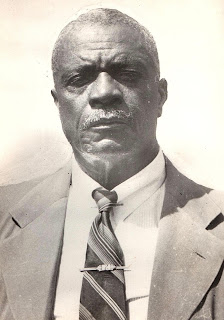 |
| Oliver C. Rogers |
Oliver was born in Hattiesburg, Perry, Mississippi on May 1871. His mother's birthplace was Virginia and his father's birthplace was Mississippi according the 1900 United States Federal Census. He was reared in Jasper County, Ms.
According to the 1880 United States Census, Oliver lived in the home with his mother Mary and his sibling. His sibling were; Lucy, Moody, Henrietta, Columbus, John, and Tammie. Mary's parents were from South Carolina.
Oliver was one of six children born to he is mother. After his father died, Oliver had to work hard to help support his mother and family. He worked hard in the heat and cold very proudly to take some of the burden off of his mother. He had a deep love for. education and took on the challenge of walking over miles to a night school near his home. This is were he received his literary training.
At the age of twenty-years old Oliver worked on a farm earned five dollars a month. He held that position for fives. He only missed three days of works during the entire time of employment on the farmer. He saved part of his money and upon arrival to Hattiesburg he had forty-dollars and he increased his money by good investments and good managements to fifty-thousands. He felt that his wife, Mrs. Roger was behind is success.
He, his wife, and children resided in Chicago until his death on August 28, 1960. They were parents of; Vinnie, Dr. David Charles Rodgers.
Source
Multa In Parvo by I. W. Crawford























